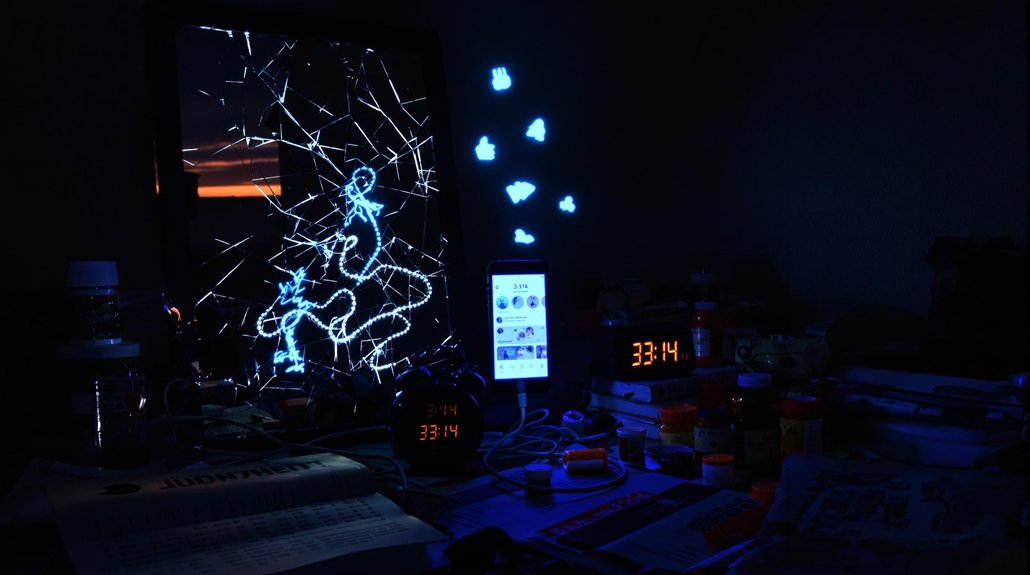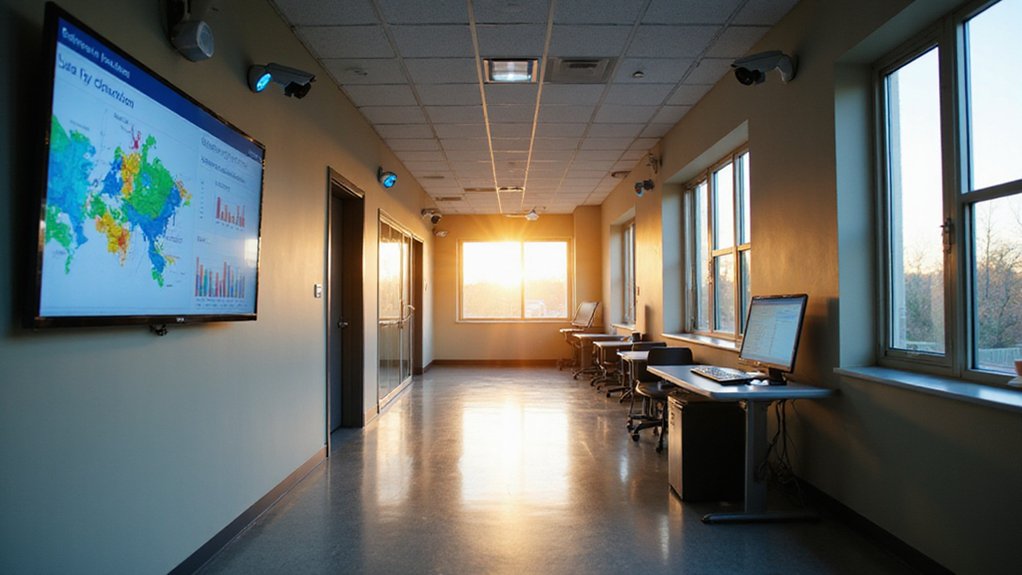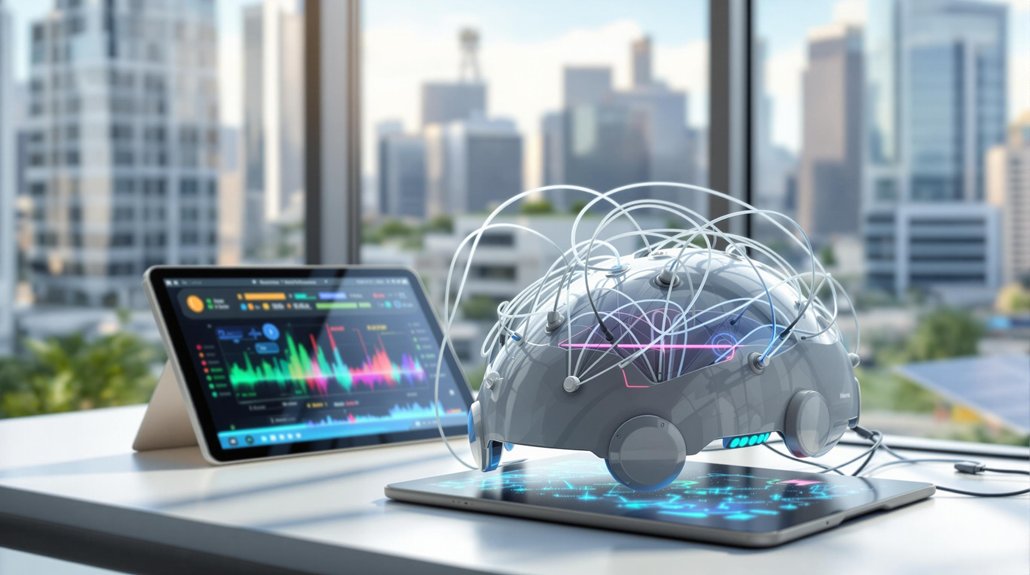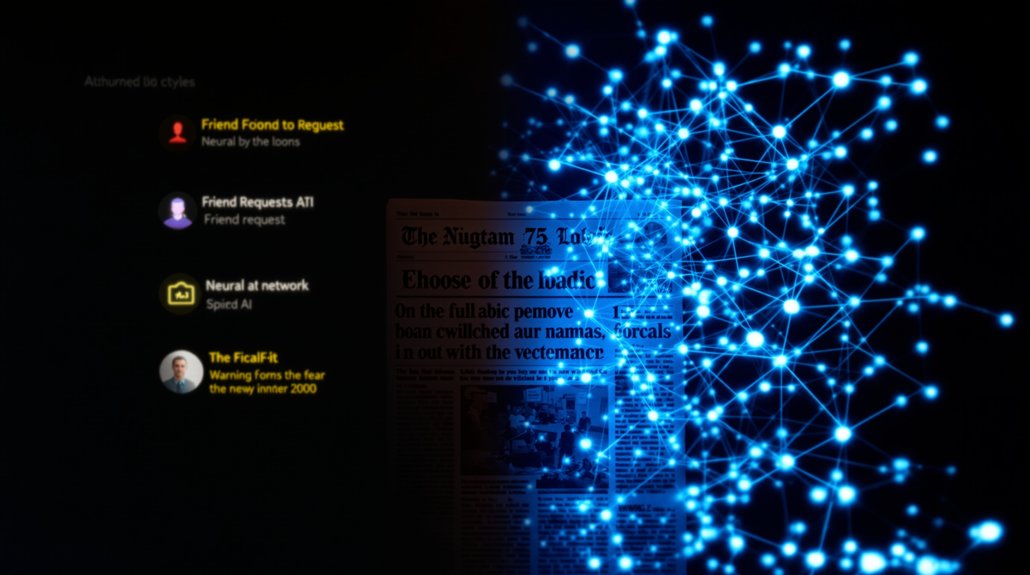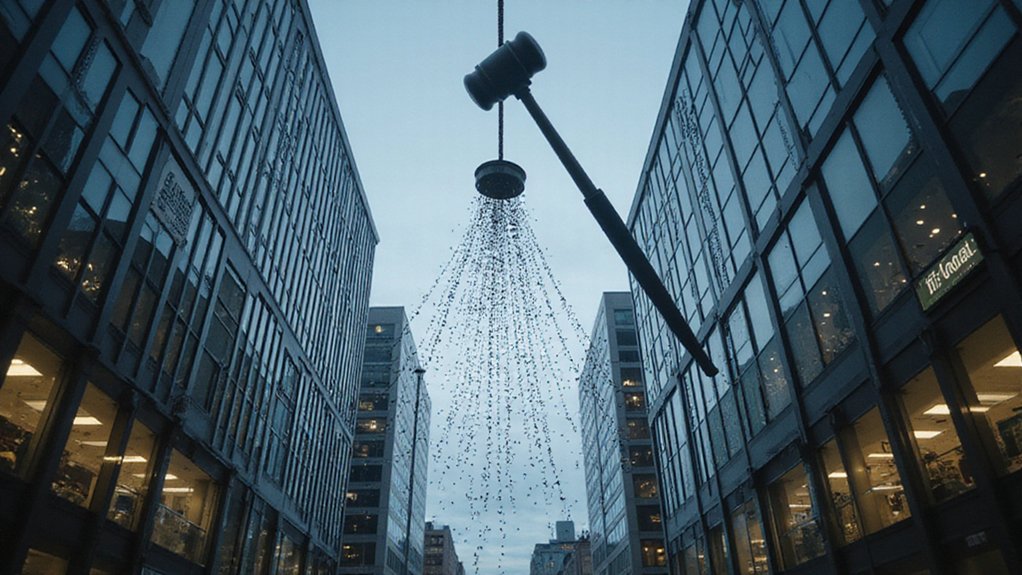How did scrolling through Instagram become a mental health crisis? The average teenager now spends nearly five hours daily on social media—double their homework time. That’s not a typo. Meanwhile, depression rates among adolescents jumped from 8.7% in 2005 to 11.3% in 2014, with anxiety affecting nearly a third of teens today.
The numbers paint an ugly picture. Over 36% of adolescents maintain constant online contact with friends, peaking at 44% among 15-year-old girls. Coincidentally—or not—girls show higher rates of problematic social media use at 13%, compared to 9% for boys. They’re also experiencing steeper rises in depression and anxiety. Internal research from Facebook reveals Instagram worsens body image for one in three teenage girls.
Girls show higher problematic social media rates—13% versus boys’ 9%—alongside steeper mental health declines.
Systematic reviews keep finding the same thing: more social media equals more psychological distress. New York City has gone so far as to classify social networking sites as a public health threat, filing lawsuits against TikTok, Meta, Snap, and YouTube for fueling the youth mental health crisis.
Here’s where it gets weird. Only 14% of teens think social media hurts them personally, but 48% believe it’s damaging their peers. That’s up from 32% just a year ago. They’re getting it, sort of. They see the damage everywhere except in the mirror.
The addiction patterns look familiar. Can’t stop scrolling. Withdrawal symptoms when the phone dies. Homework forgotten, sleep sacrificed. About 11% of adolescents show these addiction-like behaviors. The platforms’ algorithms, designed to maximize engagement, work exactly as intended. Too bad “engagement” translates to mental breakdown for millions of kids.
The U.S. Surgeon General and American Academy of Pediatrics have issued warnings. The APA points to strong correlations between social media use and adolescent struggles. Everyone calls for transparency, better protections, reduced screen time. Companies nod along while tweaking algorithms to be even more addictive.
The real twist? Some teens—32%—still report mostly positive experiences. They find community, support for marginalized identities, connections that matter.
But 19% say social media actively hurts their mental health, and 22% blame it for tanking grades.
Young adults aren’t faring better. A third of 18-to-25-year-olds now have some form of mental illness. The crisis extends beyond teenagers, suggesting this isn’t just adolescent drama.
Solutions remain elusive. Reduce addictive design elements? Good luck with that. Strengthen youth protections? The platforms will find workarounds. The damage continues, unfixable and accelerating.
References
- https://www.charliehealth.com/research/social-media-youth-mental-health-crisis
- https://law.stanford.edu/2024/05/20/social-media-addiction-and-mental-health-the-growing-concern-for-youth-well-being/
- https://www.who.int/europe/news/item/25-09-2024-teens–screens-and-mental-health
- https://www.pewresearch.org/internet/2025/04/22/teens-social-media-and-mental-health/
- https://www.center4research.org/social-media-affects-mental-health/
